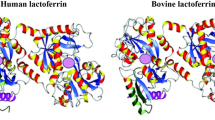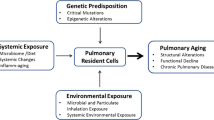Abstract
Aim
To investigate the effects of a neonatal low-protein diet on the number of macrophages in culture and the expression/production of proteins that regulate macrophage fusion in young and adult rats.
Methods
Male Wistar rats (n = 18) were suckled by mothers fed diets containing 17 % protein (controls, C) or 8 % protein (undernourished, UN). All rats were fed a normal protein diet after weaning. Bronchoalveolar lavage was collected from 42-, 60- and 90-day-old rats. Alveolar macrophages were cultured for 4 days to assess the number of cells and the expression of cadherins, key proteins involved in macrophage fusion, by western blotting. IL-4 and IFN-γ levels in culture supernatants were measured by ELISA.
Results
Offspring from mothers fed a low-protein diet showed a lower body weight gain. The number of cells in cultured macrophages from UN was reduced at 42 and 60 days and increased at 90 days. IL-4 production was increased in the supernatants from UN group at 60 days but did not affect the expression of cadherins. IFN-γ production was increased in the supernatants from UN group at 42 and 60 days and reduced at 90 days.
Conclusions
This study thus demonstrated that dietary restriction during lactation altered the number of alveolar macrophages in culture and the production of fusion proteins of offspring aged 42, 60 or 90 days but did not modify the expression of adhesion molecules important for the fusion of these cells.





Similar content being viewed by others
References
Lucas A (2005) Long-term programming effects of early nutrition—implications for the preterm infant. J Perinatol 25(Suppl. 2):S2–S6
Borba JMC, Araujo MS, Picanco-Diniz CW et al (2000) Permanent and transitory morphometric changes of NADPH-diaphorase-containing neurons in the rat visual cortex after early malnutrition. Brain Res Bull 53:193–201
Ozanne SE, Hales CN (2002) Early programming of glucose-insulin metabolism. Trends Endocrinol Metab 13:368–373
Kind KL, Simonetta G, Clifton PM et al (2002) Effect of maternal feed restriction on blood pressure in the adult guinea pig. Exp Physiol 87:469–477
Chandra RK (2002) Nutrition and the immune system from birth to old age. Eur J Clin Nutr 3:73–76
Landgraf MAV, Martinez LL, Rastelli VMF et al (2005) Intrauterine undernutrition in rats interferes with leukocyte migration, decreasing adhesion molecule expression in leukocytes and endothelial cells. J Nutr 135:1480–1485
Ferreira e Silva WT, Galvão BHA, Ferraz Pereira KN et al. (2009) Perinatal malnutrition programs sustained alterations in nitric oxide released by activated macrophages in response to fluoxetine in adult rats. Neuroimmunomodulation 16:219–227
Meyer J, Hinder F, Stothert J Jr et al (1994) Increased organ blood flow in chronic endotoxemia is reversed by nitric oxide synthase inhibition. J Appl Physiol 76:2785–2793
Amersfoort ESV, Berkel TJCV, Kuiper J (2003) Receptors, mediators, and mechanisms involved in bacterial sepsis and septic shock. Clin Microbiol Rev 16:379–414
MacLauchlan S, Skokos EA, Meznarich N et al (2009) Macrophage fusion, giant cell formation, and the foreign body response require matrix metalloproteinase 9. J Leukoc Biol 85:617–626
Vignery A (2005) Macrophage fusion: the making of osteoclasts and giant cells. JEM 202:337–340
Moreno JL, Mikhailenko I, Tondravi MM et al (2007) IL-4 promotes the formation of multinucleated giant cells from macrophage precursors by a STAT6-dependent, homotypic mechanism: contribution of E-cadherin. J Leukoc Biol 82:1542–1553
Helming L, Gordon S (2009) Molecular mediators of macrophage fusion. Trends Cell Biol 19:514–522
Helming L, Gordon S (2008) The molecular basis of macrophage fusion. Immunobiology 212:785–793
De Castro CMMB, Bureau MF, Nahori MA et al (1995) Modulation by dexamethasone of phospholipase A2 activities in endotoxemic guinea pigs. J Appl Physiol 79:1271–1277
Bradford MM (1976) A rapid and sensitive method for the quantitation of microgram quantities of protein utilizing the principle of protein-dye binding. Anal Biochem 72:248–254
Weinman AR, Jorge SM, Martins AR et al (2007) Assessment of vitamin A nutritional status in newborn preterm infants. Nutrition 23:454–460
Passos MC, Ramos CF, Moura EG (2000) Short and long term effects of malnutrition in rats during lactation on the body weight of offsprings. Nutr Res 20:1603–1612
Pires-de-Melo IH, Wanderley dos Reis F, Luz LS et al (2009) Short- and long-term effects of a neonatal low-protein diet in rats on the morphology of the larynx. Nutrition 25:855–860
Sawaya AL, Dallal G, Solymos G et al (1995) Obesity and malnutrition in a Shantytown population in the city of Sao Paulo, Brazil. Obes Res 3:107S–115S
Barker DJ (1999) Early growth and cardiovascular disease. Arch Dis Child 80:305–307
Barker DJ (2007) The origins of the developmental origins theory. J Intern Med 261:412–417
Araújo FRG, De Castro CMMB, Rocha JA et al (2012) Perialveolar bacterial microbiota and bacteraemia after dental alveolitis in adult rats that had been subjected to neonatal malnutrition. Br J Nutr 107:996–1005
Melo JF, Aloulou N, Duval JL et al (2011) Effect of a neonatal low-protein diet on the morphology of myotubes in culture and the expression of key proteins that regulate myogenesis in young and adult rats. Eur J Nutr 50:243–250
Melo JF, Macêdo EMC, Paes-Silva RP et al (2008) Effect of neonatal malnutrition on cell recruitment and oxidant-antioxidant activity of macrophages in endotoxemic adult rats. Rev Nutr 21:683–694
Barros KMFT, Manhães-De-Castro R, Lopes-De-Souza S et al (2006) A regional model (Northeastern Brazil) of induced mal-nutrition delays ontogeny of reflexes and locomotor activity in rats. Nutr Neurosci 9:99–104
Barreto-Medeiros JM, Feitoza EG, Magalhães K et al (2004) Malnutrition during brain growth spurt alters the effect of fluoxetine on aggressive behavior in adult rats. Nutr Neurosci 7:49–52
Passos MC, Da Fonte RamosC, Dutra SC et al (2002) Long-term effects of malnutrition during lactation on the thyroid function of offspring. Horm Metab Res 34:40–43
Borelli P, Barros FEV, Nakajima K et al (2009) Protein-energy malnutrition halts hemopoietic progenitor cells in the G0/G1 cell cycle stage, thereby altering cell production rates. Braz J Med Biol Res 42:523–530
Martinez FO, Helming L, Gordon S (2009) Alternative activation of macrophages: an immunologic functional perspective. Annu Rev Immunol 27:451–483
Fernandez-Boyanapalli RF, Frasch SC, McPhillips K et al (2009) Impaired apoptotic cell clearance in CGD due to altered macrophage programming is reversed by phosphatidylserine-dependent production of IL-4. Blood 113:2047–2055
McInnes A, Rennick DM (1988) Interleukin 4 induces cultured monocytes/macrophages to form giant multinucleated cells. J Exp Med 167:598–611
McNally AK, Anderson JM (1995) Interleukin-4 induces foreign body giant cells from human monocytes/macrophages. Differential lymphokine regulation of macrophage fusion leads to morphological variants of multinucleated giant cells. Am J Pathol 147:1487–1499
Fock RA, Vinolo MAR, Crisma AR et al (2008) Protein-energy malnutrition modifies the production of interleukin-10 in response to lipopolysaccharide (LPS) in a murine model. J Nutr Sci Vitaminol 54:371–377
Rodríguez L, González C, Flores L et al (2005) Assessment by flow cytometry of cytokine production in malnourished children. Clin Diagn Lab Immunol 12:502–507
Villarroel MV, Valbuena AA, Pereira N et al (2008) Citocinas TH2 (IL4 e IL10) en el niño desnutrido. Arch Venez Puer Ped 71:42–47
Young HA, Hardy KJ (1995) Role of interferon-γ in immune cell regulation. J Leukoc Biol 58:373–381
Chan J, Tanaka K, Mannion C et al (1997) Effects of protein calorie malnutrition on mice infected with BCG. J Nutr Immunol 5:11–19
Arababadi MK, Pourfathollah AA, Daneshmandi S et al (2009) Evaluation of relation between IL-4 and IFN-γ polymorphisms and type 2 diabetes. Iran J Basic Med Sci 12:100–104
Serafim TD, Malafaia G, Silva ME et al (2010) Immune response to Leishmania (Leishmania) chagasi infection is reduced in malnourished BALB/c mice. Mem Inst Oswaldo Cruz 105:811–817
Acknowledgments
The authors wish to thank CAPES–COFECUB (grant 584/07) and the National Council for Science and Technology (CNPq), Brazil, for their financial support.
Conflict of interest
The authors declare that they have no conflict of interest.
Author information
Authors and Affiliations
Corresponding author
Rights and permissions
About this article
Cite this article
de Melo, J.F., da Costa, T.B., da Costa Lima, T.D. et al. Long-term effects of a neonatal low-protein diet in rats on the number of macrophages in culture and the expression/production of fusion proteins. Eur J Nutr 52, 1475–1482 (2013). https://doi.org/10.1007/s00394-012-0453-y
Received:
Accepted:
Published:
Issue Date:
DOI: https://doi.org/10.1007/s00394-012-0453-y




